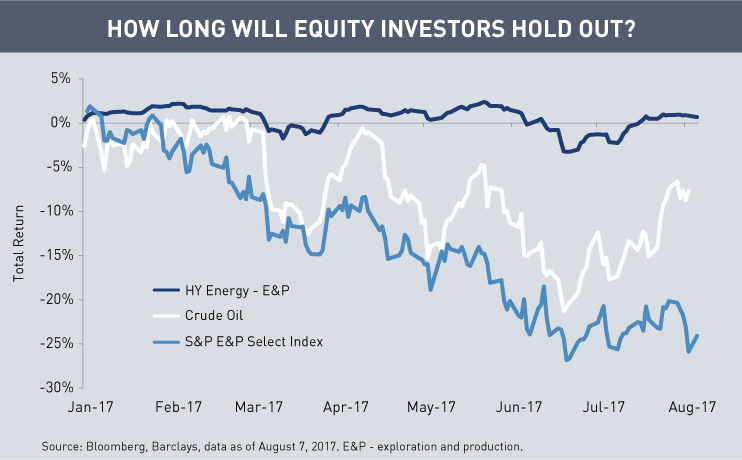After taking a hit earlier this summer, oil prices have climbed back around $50 a barrel. What’s my advice on oil price volatility? Hang in there. The good news—we’ve been through this before. The bad news—we’ve been through this before.
Ultimately, I think the oil market can self correct. Projected demand is up, and in my view, since few oil companies can make a reasonable return with oil prices at or below current levels, production and inventories should gradually fall.
Several companies cut spending and guidance on second-quarter calls and are guiding toward spending within cash flow in 2018, noting the softer commodity price environment. While the near-term cuts are focused on non-productive capital (read: long-term projects), I think companies will lower spending on drilling in 2018 if prices fall below $50 per barrel.
I think the spending cuts are a positive development for two reasons. First, companies are showing that they have the flexibility to adjust near-term spending in a lower oil price environment. Second, the cuts mean fewer new drilling projects and could result in a significant production hole in 2019 and 2020 when current offshore and other conventional projects start to drop off.
What if I’m wrong and oil prices stay lower for longer?
The biggest risk to my view is if OPEC’s supply cut agreement falls apart without a sufficient recovery in inventory levels, which could flood the market with excess supply and keep prices low. If oil prices don’t recover, many companies could face free cash flow gaps in the second half of the year.
Under ordinary circumstances, companies could borrow or issue equity to raise cash, but yields have been relatively high, and energy equity prices have fallen so far, so fast that investors burned from previous downturns have fled the sector. Few investors are likely to take a chance on funding potentially unprofitable projects just for the sake of growth, so companies have to rethink their strategies and business plans. Some companies are hoping to attract investors by generating returns on equity through capital preservation. Can this strategy succeed in a lower-for-longer scenario? It’s a theme I am watching closely.
So what are investors doing now?
For now, equity investors seem to be holding out for oil prices to sink to $40 per barrel or even $30 per barrel before jumping back into the market. Some speculate the current standoff could portend a slower rebound as long-term investors remain on the sidelines until they see bargain prices.

Past performance is no guarantee of, and not necessarily indicative of, future results.
Commodity interest and derivative trading involves substantial risk of loss.
This is not an offer of, or a solicitation of an offer for, any investment strategy or product. Any investment that has the possibility for profits also has the possibility of losses.
MALR020495




